Iceland: From Great Depression to Hottest Destination on Earth — but bring your credit card

(The first of a three-part series)
REYKJAVIK, Iceland — Have you ever driven at midnight with your lights off? How about taking a sunset stroll at 11:30 p.m? I love sunrises. Try one at 3 in the morning.
This time of year in Iceland, the light is always on. You see things you can’t see anywhere else on Earth: driving a long, lonely highway into a string of snow-capped volcanoes; icebergs floating in a crystal-clear lagoon like ice in a blue daiquiri; puffins, those funny-looking birds always crash landing on “The Discovery Channel,” staring at you from a cliff as you pull into an island once nearly destroyed by a volcanic eruption only 40 years ago.
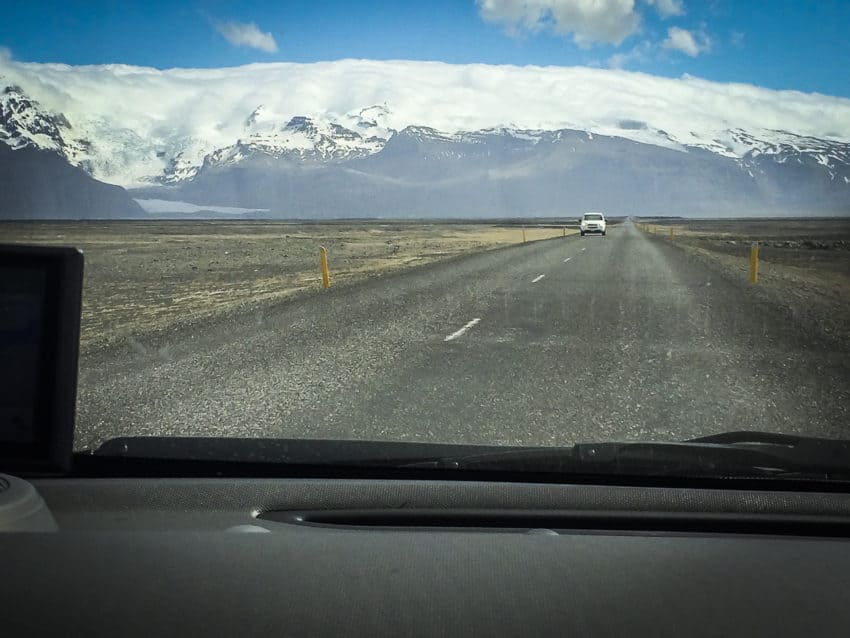
In the last few years, Iceland’s light has shined all over the world. Temperatures in May might be in the low 40s but no country is hotter than Iceland. Since 2010, its tourist numbers have shot up like the geysers that pepper its countryside. In 1990, Iceland had 90,000 visitors. It has doubled in the last six years to where officials expect 2.2 million in 2017.
I was one of them.

I recently spent 12 days in the country, renting a car and driving around the island over nine days, covering 2,101 kilometers. My motivation to come here was twofold. Like the rest of the world, I’d caught wind of Iceland’s natural charm, both geographically and socially.
This is a country that, like me, is just to the left of Gandhi. During a terrific Walking Tour Reykjavik, I learned it has free public university education. It has free health care. It has paid maternity leave for the mother and father. Of Iceland’s 63 senators, 30 are women. Its annual gay pride parade attracts 80,000 people. Iceland only has 330,000. Iceland is not 24 percent gay. They’re the most open-minded people I’ve ever met. Icelanders are as big an attraction as the volcanoes and much less volatile.
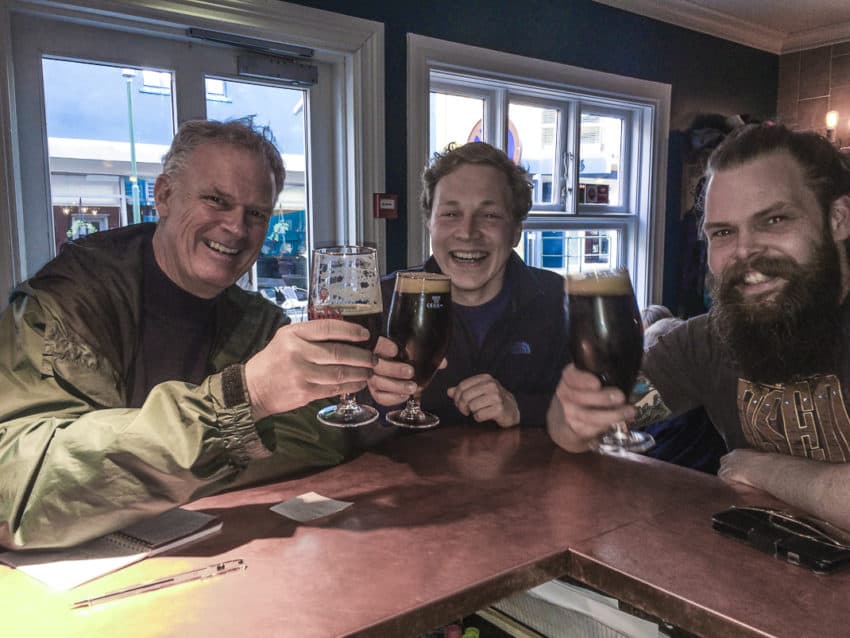
But scenery is what I wanted to see. I wanted a landscape that makes you think you’re an extra in a science fiction movie one minute and a “National Geographic” special the next. I also had a free ticket from American Airlines to go anywhere it and its partners flew in Europe. From my home in Rome, European air travel is cheaper than trains. To Iceland, however, I priced flights at more than $400. I chose Iceland merely because it was the most expensive flight I could get for nothing. It’s the backpacker in me.
That was the last bargain I saw.
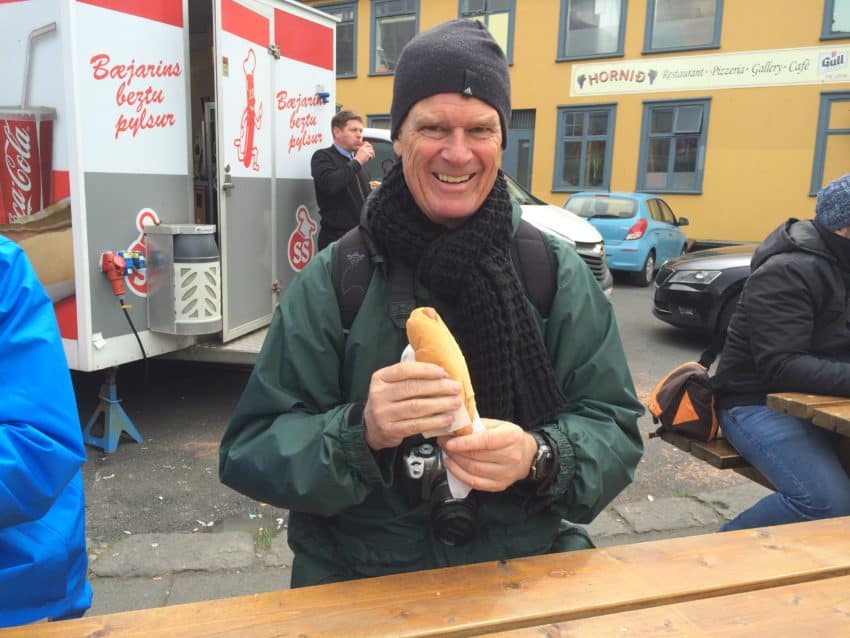
Iceland’s exorbitant prices aren’t just astronomical. They are insulting. Beer $12. Local fish $38. Hamburgers $20. Coffee $5. AirBnBs $100. Gas $7.40 a gallon. Want an authentic Icelandic wool sweater? Great. Put away $200 for it. Every time I paid, I felt violated. Iceland is almost a cashless society. Icelanders pay everything with a credit card, from skyr, their delicious yogurt, to svidasulta, their disgusting head cheese. I assume it’s because they never have enough cash to pay for anything. I put a picture of a $13.50 beer on Facebook. A friend, Rick Reilly, wrote, “… so you drink it with a catheter?”
Fortunately, the best things in Iceland are free.
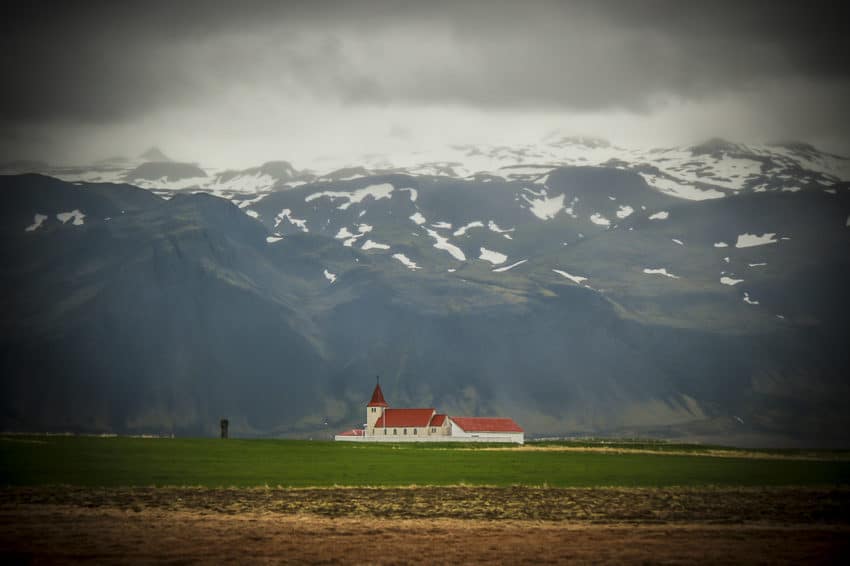
It is why I left Iceland with no regrets despite finding my yearly travel budget chart sporting a volcanic eruption cloud over it. It’s natural that Iceland is eye candy. It lies on the Mid-Atlantic Ridge between two gigantic tectonic plates. The rift is 10,000 miles long and Iceland’s crust is a third of the usual thickness. That means it’s susceptible to volcanic eruptions. About 20 million years ago, practically last week relative to geological eons, this island suffered numerous underwater volcanic eruptions. Today 30 volcanoes remain active. It’s not hard to find molten rock bubbling in the earth like a slowly simmering soup.
I hiked two incredible trails into the heart of Iceland’s wilderness. In summer the Vatnajokull National Park is more crowded than the New York Marathon. In May, however, I almost had an entire trail to myself. It probably helped that it was in the low 40s and I was hiking uphill into a stiff headwind. So stiff, when I reached the massive Skaftafellsjokull glacier, I had to lean forward to keep from getting blown over as a fellow hiker tried mightily to take my photo without his hands shaking.
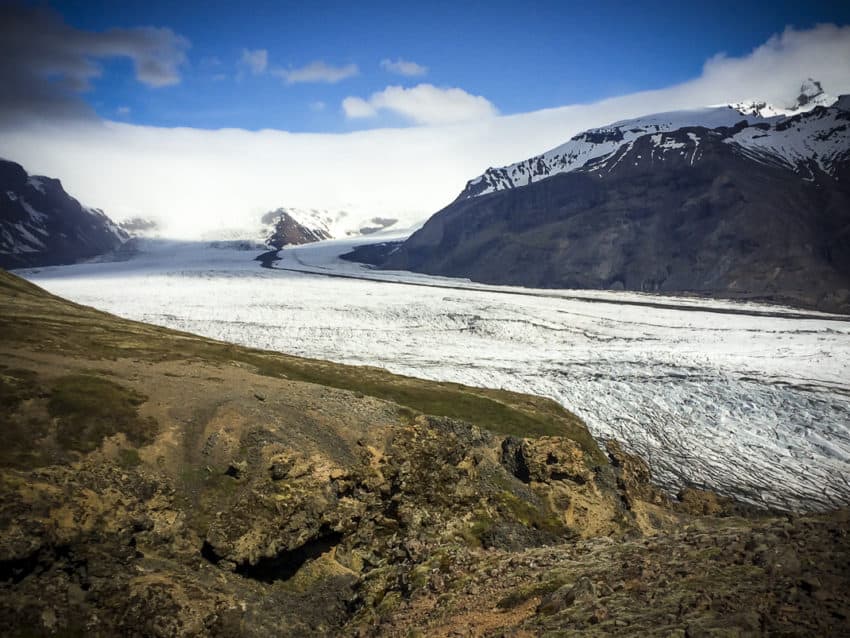
The next week in North Iceland, I hiked nine kilometers through a massive lava field, ascending Dalfjall, a mountain with panoramic views of the lava, an entire range of snow-capped mountains and the imposing Hverfjall, Kilimanjaro’s lookalike volcano. In the 2 ½-hour hike, I never saw another person. If I broke an ankle, I’d still be there.
Afterward, I drove to one of the dozens of natural thermal pools that Icelanders frequent as part of their normal routine. The Myvatn Natural Bath, named for the beautiful lake dominating North Iceland, has two pools of 95 and 99 degrees, plus a large hot tub at 108. Each pool has comfy ledges where I sat staring at the snow-capped mountains and smoke drifting up from nearby simmering magma.
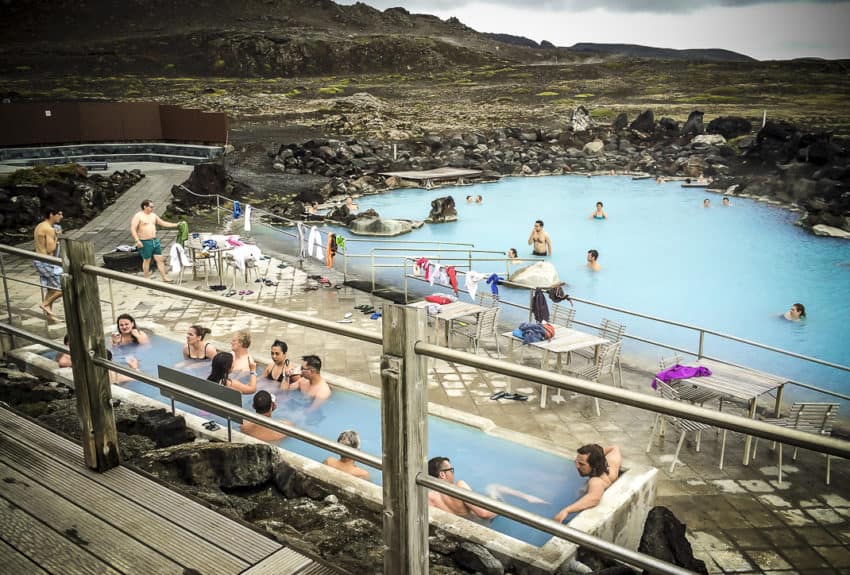
I took a ferry to Heimaey, the island nearly leveled by an eruption in 1977. I stood on a high viewing platform on the far northeast corner of Iceland and saw an arboretum of Icelandic bird life covering a cliff sticking out of the sea. I walked along a lagoon and picked up chips from icebergs the size of yachts on their slow journey to the North Atlantic.
I will cover my adventures in a later blog. It still astounds me that only nine years ago Iceland was in the throes of a crippling financial mess. How’d it get to the hot spot of 2017? Start with the global financial crisis of 2008. Remember how it affected the U.S? In Iceland, it represented its Great Depression. The market value on the Icelandic Stock Exchange fell by 90 percent. The external debt skyrocketed to 50 billion euros. The krona dropped 35 percent to 340 to the euro (it’s 110 today). Interest rates went up 15.5 percent. Unemployment tripled.
“It was so bad people thought we might not have groceries to buy,” said Ashildur Bragadottir, director of Visit Reykjavik and who worked in a major bank at the time. “Every store would be empty. It was really, really catastrophic. People were just crying. Many people lost their houses, cars.”
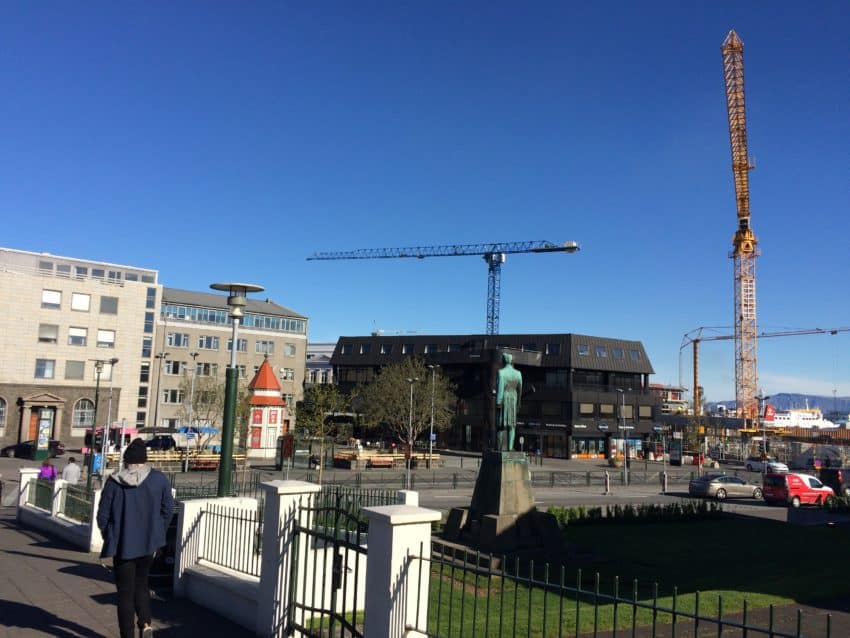
I talked with her in Reykjavik’s artsy City Hall on the banks of Tjornin, a man-made lake where I spent a lunch hour feeding sandwich bread to geese. Like most government officials, she’s absolutely giddy about Iceland reaching the top of the world in something besides liberal politics. The No. 1 destination in the world on Google Search last year was Reykjavik. A new domestic airline, WOW air, opened five years ago to offer cheaper flights within the country. Hotel rooms are running 95 percent capacity year round. In summer it’s 24-hour sunlight; in winter it’s the Northern Lights.
What happened?
Savvy thinking. When the krona dropped to 320 against the euro, Bragadottir said, “It was really cheap to travel to Iceland. We used it in marketing. Instead of saying we can’t afford to promote Iceland and Reykjavik, the city decided to put forces in promoting Reykjavik as a destination from abroad. Because it was cheap.
“And it worked.”
Then in April 2010, another catastrophe hit. About 75 miles southeast of Reykjavik, the volcano Eyjafjallajokull erupted, cancelling all flights to and from many European cities for six days, stranding millions. The disruptions continued into May. But as with the financial crisis, it became a positive. Video around the world showed Iceland’s geography as a pretty backdrop to the gray mushroom clouds billowing out of the earth. Suddenly, millions became intrigued with the mountains, oceans, thermal baths and, yes, volcanoes, despite the apparent danger. Iceland became late-night talk-show fodder just by a compilation of TV anchors butchering the volcano’s name. (It’s pronounced AY-yah-fyad-layer-kuh-t. Don’t try it. You won’t get it right. Only Icelanders apparently have the jaw structure to pronounce the last syllable. After two weeks I couldn’t even say the Icelandic term for “How much?” Also, I was afraid to ask.)

Among those discovering Iceland was Hollywood. “Game of Thrones” is filmed here. So was the 2013 hit “The Secret Life of Walter Mitty” in which Ben Stiller is seen skateboarding in front of Kirkjufell, the majestic mountain in West Iceland shaped like a giant cathedral. Soon tourists began pouring in. The krona began to rise. So did salaries. Iceland’s average gross salary is $64,461 a year.
However, also rising was inflation. Iceland’s cost-of-living index is third highest in the world behind Bermuda and Switzerland. Iceland is the fourth most expensive country in the world. Add a tax rate that drops the average net salary to $43,358 a year and you have a populace that’s struggling as much as tourists. Prices were a constant theme among us. Due to $300 round-trip flights from Newark and $700 from Miami, Americans made up about two-thirds of the tourists I saw. I sometimes heard more English than Icelandic. Prices around the country were consistently 25-30 percent higher than those listed in my “Lonely Planet,” printed only two years ago.
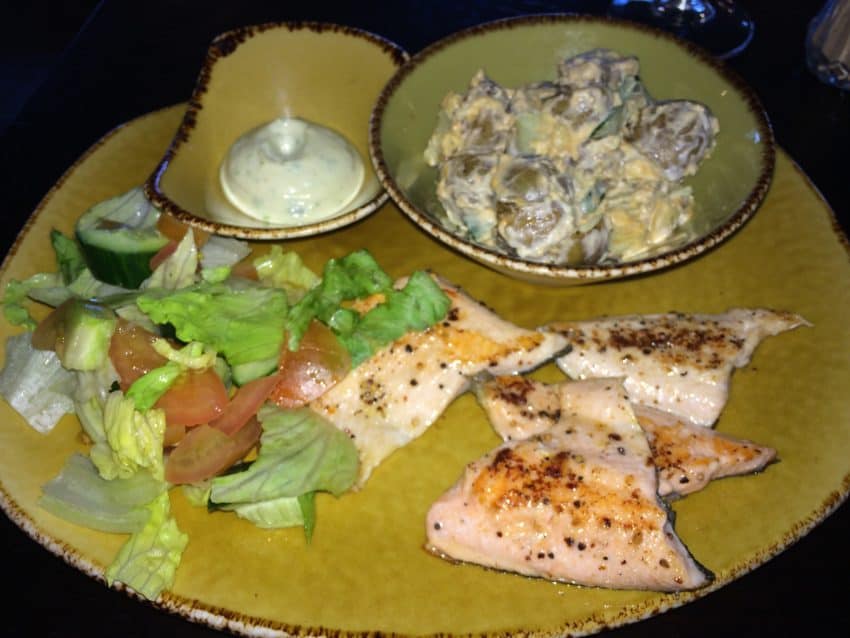
We all found ourselves shopping in supermarkets. Bonus, one of Iceland’s budget food stores, became as sought after as a thermal bath. I found myself sitting in my car eating cellophane-wrapped sandwiches bought in gas station convenience stores. Of course, eating while looking out at Snaefellsjokull, the 4,744-foot volcano that inspired Jules Verne’s “Journey to the Center of the Earth,” wasn’t bad but that’s beside the point.
The point is Iceland is becoming cost prohibitive. There is no break. There are few options other than food trucks. Food and beer prices in small-town cafes are as expensive as restaurants in Reykjavik. Taxes are to blame for the high price of alcohol. The government places a 75-percent tax on all sales. Bars must charge high prices to make any profit. It’s why when I landed, I could tell the locals. They were mobbing the airport’s duty free alcohol department like refugees in a Costco, which, ironically, just opened in Reykjavik and 40,000 people signed up the first week. Reykjavik also boasts the world’s biggest IKEA.
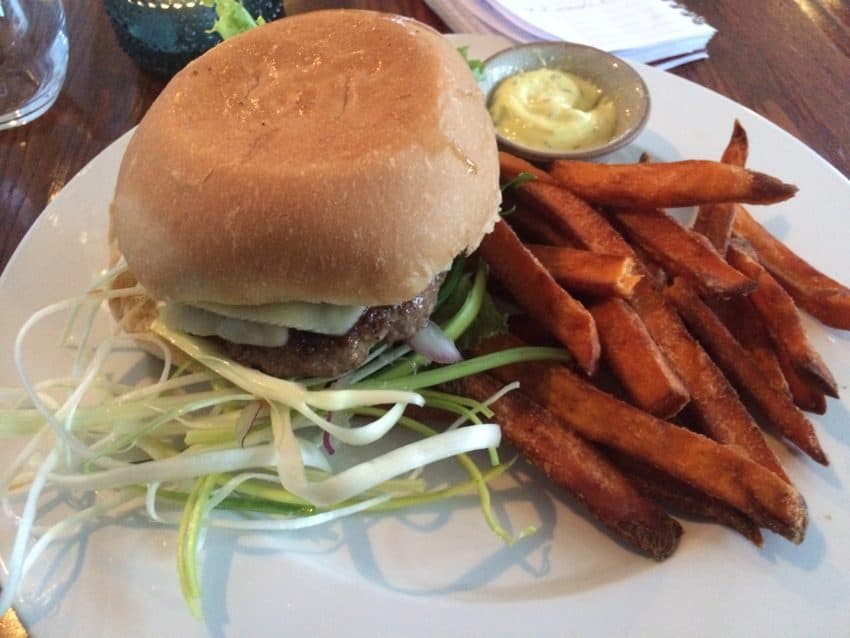
One of Reykjavik’s most popular traditions is the Djammid. That’s the Reykjavik pub crawl where bars get hopping around midnight and continue packed until 4 a.m. However, the price of alcohol has forced locals into a new strategy. They buy their booze at one of the cheaper state-licensed stores and drink at home. When properly buzzed, they take an overpriced taxi, sometimes $50 from the suburbs, to downtown. Then they nurse two or three $13 beers until closing when they taxi back.
Combine the booze with food prices and I wonder how you date in Iceland: “Hey, beautiful. You busy tomorrow night? Want to come over to my place and drink a six-pack from the government liquor store?” What woman would say yes to that?
“We know it’s expensive but the living standard is really high in Iceland,” Bragadottir said. “Obviously, it’s expensive for the city and the companies in the city to have a growth in tourism. The investment need is enormous.”
Despite the costs, Iceland officials don’t think the upward tourism arc will end. Ninety-eight percent of tourists tell exit surveyors at the airport that they’d recommend Reykjavik as a destination. The capital wants to double its number of 4,700 hotel rooms by 2022. Marriott has started building the country’s first five-star hotel, scheduled to open next year.
But will the plans go up in smoke like the volcanoes that rock this country every time it gets comfortable. How much higher can the krona grow before it collapses?
“The economy is overheating,” said Jon Tomasson, who worked in tourism for years and owns the charming Nordur-Hvammur AirBnB where I stayed near the South Iceland town of Vik. “If the krona gets too strong, it’s hard to say. The problem is we’re a small nation with our own currency. It’s very difficult.”
No surveyor at the airport asked if I’d recommend Iceland. I don’t know what I’d say. I’m glad I went. I saw geography that left me slack jawed like a little boy. But I paid a price: $2,350 over 12 days. That includes free airfare.
For the future? I’ve turned out the lights on Iceland.

